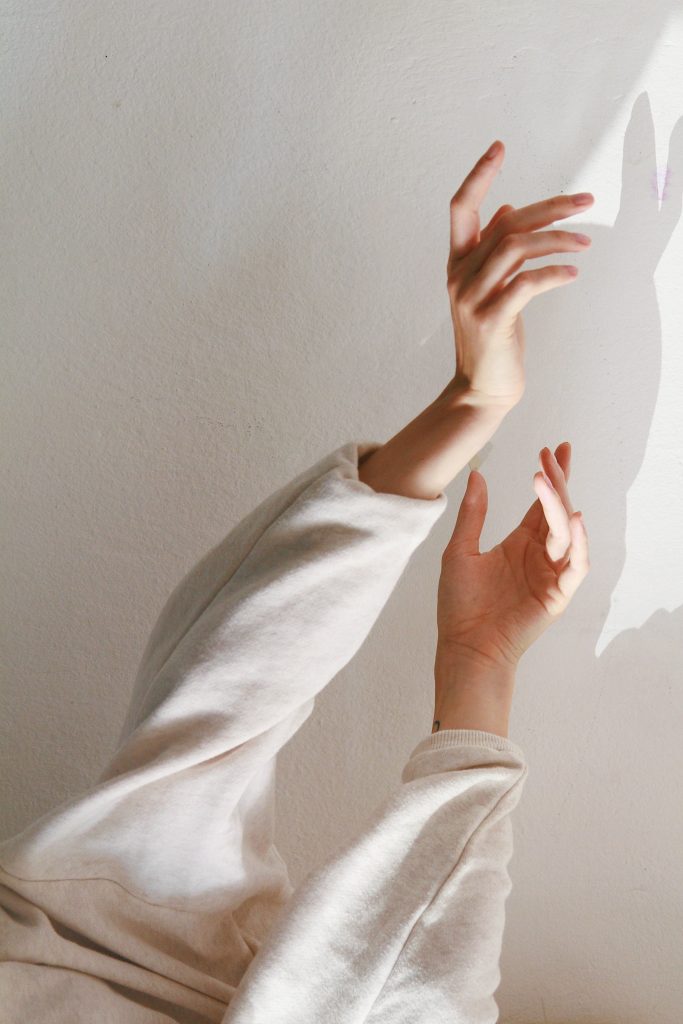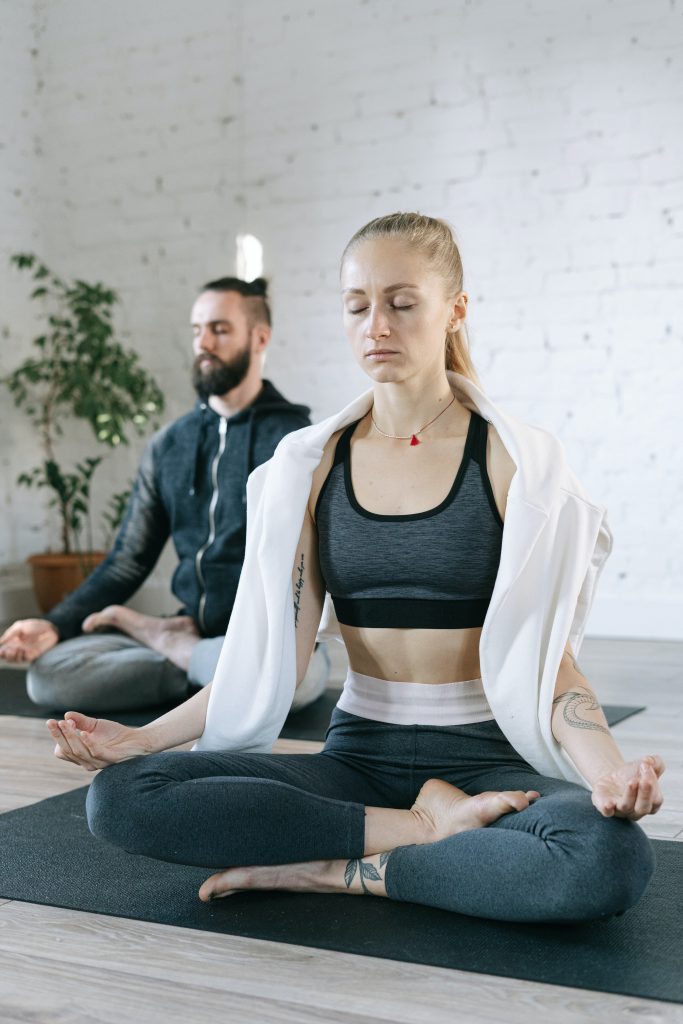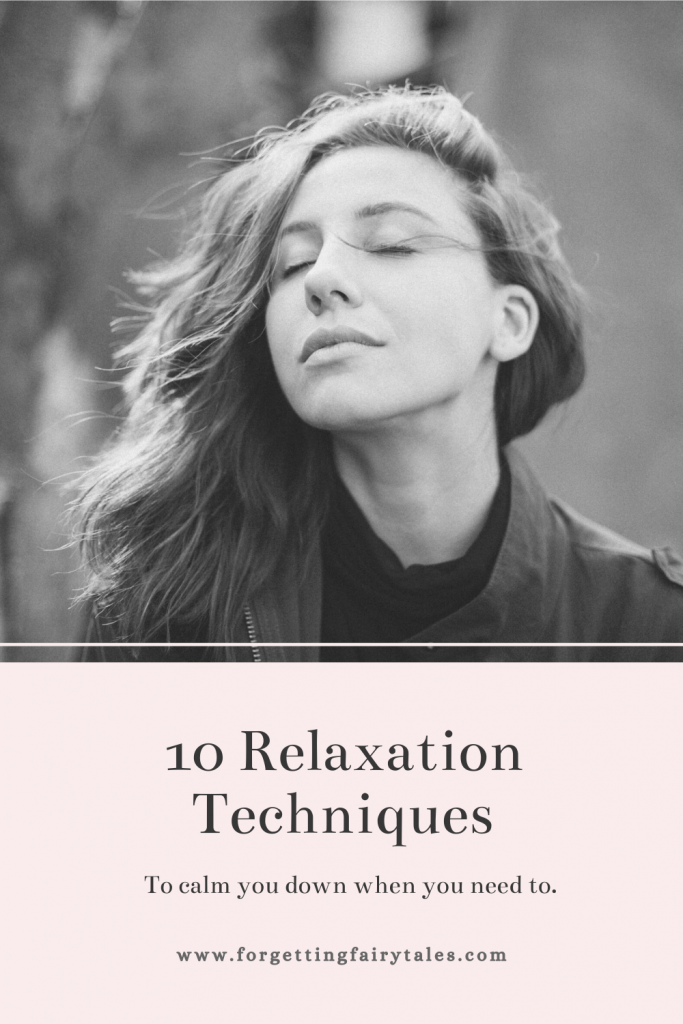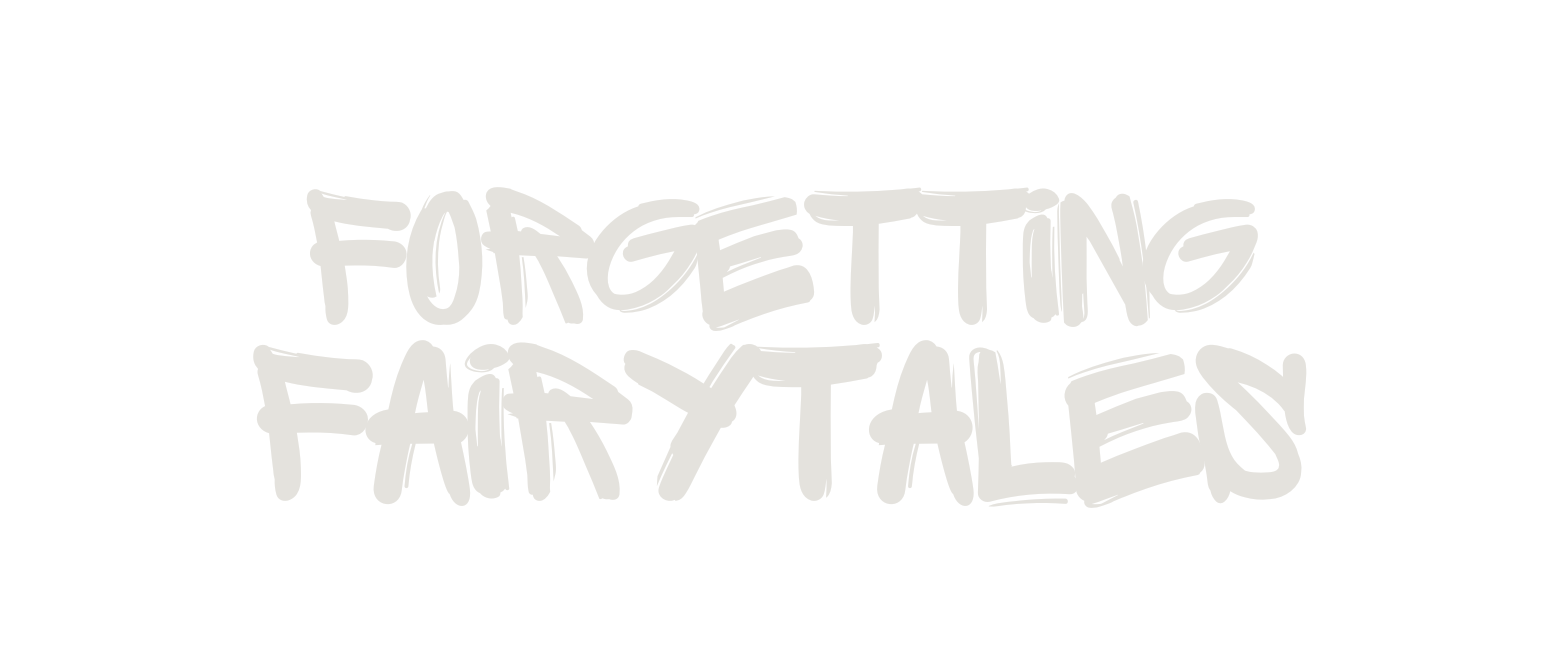Are tensions are running high in your relationship and you need to cool down instead of kicking off? Are you starting to catch feelings for someone and it’s beginning to stress you out? Or maybe you’re working on your life goals, but are beginning to feel overwhelmed? Whatever it may be, knowing how to calm down when you need to is a key part of building emotional stability. So, in this post, I’m going to share 10 relaxation techniques you can try.
10 Best Relaxation Techniques (To Help You Calm Down!)
So let’s get stuck straight in with our top relaxation techniques shall we?
Have a read, give them all a go and be open-minded. (This is key!) You can then use the ones that work best for you, to better deal with the difficult situations you find yourself in.
But pssst, spoiler alert – you’re probably going to be surprised by how much these relaxation techniques do actually help!
1) Take a Deep Breath
So I’m going to start from the top with a simple breathing exercise for relaxation.
- First up, if you’re sitting or standing, place both feet flat on the ground.
- Loosen your shoulders, roll them back, and twist from side to side to release the tension in your back.
- Let your breath flow as deep down into your belly as is comfortable, without forcing it.
- Try breathing in through your nose and out through your mouth.
- Breathe in gently and regularly, counting steadily from 1 to 5.
- Then, without pausing or holding your breath, let it flow out gently, counting from 1 to 5 again.
- Keep doing this for 3 to 5 minutes. Or until you feel calm.
Whilst you’re doing this, you should think of nothing else but your breath.
Whatever stresses or worries you’re having, let them go. Any thoughts, push them aside. In those moments, it’s just about clearing your mind and getting back to simply breathing.
If you’re on your own and in a quiet space, you may also find it helps to close your eyes whilst doing this. After all, that has additional benefits in itself…

2) Close Your Eyes
Closing your eyes is great for de-stressing, and so – unsurprisingly – it’s a simple relaxation technique we had to use in this list!
See, it calms your mind and relaxes your muscles & organs.
Many refer to it as “quiet wakefulness” because when you rest your eyes, you essentially tell your body it’s safe and can take a break from focusing or thinking.
Try closing your eyes with your breathing exercises, or close your eyes as you tell yourself reassuring words that also help to sooth your mind.
It’s something you can do anytime, anywhere, for any amount of time, so it’s a pretty powerful tool!
3) Challenge Your Thoughts
If you want to calm down, you need to change the way that you speak to yourself.
Whatever’s getting you worked up, recognise the thoughts that are flying through your head, slow them all down so that you can actually process and recognise them, then make sure you do the final stage, which is to challenge them.
For example, let’s go back to the argument that’s brewing with your partner. You feel annoyed at something he / she has done, and are building it up more and more. Instead of blowing up, head into the other room, take a few deep breaths and then ask yourself…
- Are my feelings fully justified?
- How can I see this from their side?
- How could I change the way I see this?
- What is the best way to approach this?
NOTE: Before you do this, you may also like to have a BIG SIGH!
FUN FACT: Sighing stretches the respiratory muscles, reduces muscle tension in the body, reduces breathing irregularity, and restores oxygen and carbon dioxide levels when they become too low or high.
For this reason, it also helps to reset us physiologically, which leads to a feeling of relief.
By letting out a big sigh before you challenge your thoughts, it will therefore help to change your state (even just a touch!) and make it a little easier.
Then it’s a case of breaking everything down, challenging your thoughts, changing the way you see the situation, and how you think about it all, to ultimately – change the way you feel, too.

4) Use Pressure Points
Moving on now, lets very briefly look at pressure points for relaxation.
Better known as acupressure, this involves stimulating pressure points in your body, either on your own or with the help of a professional.
A few easy points to get you started:
The Hall of Impression Point:
This lies in the middle of your eyebrows, above the roof of your nose. Sit comfortably. It can help to close your eyes. Touch the spot between your eyebrows with your index finger or thumb.
Take slow, deep breaths and apply gentle, firm pressure in a circular motion for 5 to 10 minutes.
The Heavenly Gate Point:
A funny name, but this one is actually located on your ear (of all places). It’s in the upper shell of your ear, at the tip of the triangle-like hollow.
Search it on google images if you’re not entirely sure. With this pressure point you want to apply firm, gentle pressure in a circular motion for two minutes.
The Shoulder Well Point:
The shoulder well point is in your shoulder muscle, just to the side of your neck. To find it, pinch your shoulder muscle with your middle finger and thumb.
Apply gentle, firm pressure with your index finger and massage the point for four to five seconds. Release the pinch as you massage the point.
The Union Valley Point:
This is in the webbing between your thumb and index finger. It’s a good one because you can do it anytime, anywhere, without it being noticable.
Simply use your index finger and thumb, applying firm pressure. Massage the pressure point for four to five seconds, taking slow, deep breaths.
Inner Frontier Gate Point:
Last but not least, you can find the inner frontier gate point on your arm, about three finger widths below your wrist. Turn one hand so your palm faces up.
With your other hand, measure three fingers below your wrist. The point lies here, in the hollow between the tendons. Apply pressure to the point and massage for four to five seconds.
The Hall of Impression and Union Valley are my favourites, but give them all a go and see which works for you.

ADDED EXTRA: Try Palm Therapy
Another great, yet simple, relaxation technique is the Palm Push. This is actually known as Palm Therapy.
“Palm therapy works by stimulating lines and areas in the palms of the hands. These areas are supposed to have a link to the brain. Moshe Zwang says although the palm of a hand is just a small section of the body it has a relatively large representation in the brain. Using Palm therapy is supposed to relax you in minutes and once you learn which areas of your palm to stimulate, it can be done anywhere at anytime.”
Click here to read more about it. Or to get Moshe Zwang’s book and have him teach you himself, click here.
For this palm push technique, you simply push your palms together and hold for 5 to 10 seconds, you give your body “proprioceptive input.”
It’s pretty similar to our relaxation techniques including pressure point exercises, but with different beliefs and theories behind it.
5) Focus On Your Body Or Surroundings
We’re using a combination of Mindfulness and Grounding here, but a great relaxation technique is to stop whatever you’re doing (preferably closing your eyes, or at least focusing your eyes on one set place in front of you) then listening to your surroundings.
Become aware of that and that alone. What can you hear? The rain outside? The slight humming from the cooker? Distant chatting of friends in the street?
Listen closer and let the sounds wash over you, reminding you where you are. It will bring you back to the present moment and re-set your mind.
If there’s nothing relaxing about what’s around you, then instead focus on your body. Focus on how it feels, from head to toe, noticing each part. Become aware of every single body part.
Do your eyes feel heavy? Your shoulders a little tight? Feel your chest moving, your heart beating. And work your way right the way down…
Curl your fingers or wriggle your toes and notice how that feels.
Another relaxation technique is to work your way down your entire body, relaxing each body part as you go. This of course is best done lay down.
You could also do this before then tuning into the sounds of your surroundings. The options are endless, making it another of our top-recommended relaxation techniques.

6) Use Visualisations
Moving on from meditations, I also want to touch briefly on visualisations.
This is a variation on traditional meditation that involves imagining a scene in which you feel at peace, free to let go of all tension and anxiety.
How it works? Choose whatever setting is most calming to you, whether it’s a tropical beach, a favorite childhood spot, or a quiet wooded glen.
Put some supportive, relaxing music on if you like – one which complements the scene that you’re imagining. Then just take a few minutes to lose yourself in it.
Picture yourself being in that place. Focus on what you can SEE, HEAR, SMELL, TASTE and FEEL. Ignite all your senses and see it through your minds eye, really bring it to life.
Let’s go back to the argument example with your partner. If you were to use visualisations before confronting them about an issue, taking yourself back to a special place where you shared some good memories together, do you think you’d approach them differently after that?
7) Try A Guided Meditation
Now this may not be for everyone, but I thought it was essential to include in this list, as it’s an incredibly powerful tool, once you learn how to get into meditation.
See, meditation involves sitting in a relaxed position and clearing your mind, or focusing your mind on one thought and clearing it of all others – so we’re using this in many of the strategies mentioned above already.
You may focus on a sound, like “ooommm,” or on your own breathing, counting, a mantra or nothing at all.
A common thread among the many meditation techniques is that the mind stops following every new thought that comes to the surface.
Meditation can actually be done by anyone anywhere. If you’re new to meditation, I recommend starting with this 30 Day Meditation Challenge For Beginners. (Hope it helps!)

8) Try Progressive Muscle Relaxation
In progressive muscle relaxation, you tense a group of muscles as you breathe in, and you relax them as you breathe out.
You work on your muscle groups in a certain order. When your body is physically relaxed, you feel more relaxed.
This is a relaxation technique that needs to be practiced and worked on however. It may take you a little time to come to terms with. What to do?
- Choose a place where you won’t be interrupted and where you can lie down on your back and stretch out comfortably, such as a carpeted floor.
- Breathe in, and tense the first muscle group (hard but not to the point of pain or cramping) for 4 to 10 seconds.
- Breathe out, and suddenly and completely relax the muscle group (do not relax it gradually).
- Relax for 10 to 20 seconds before you work on the next muscle group. Notice the difference between how the muscles feel when they are tense and how they feel when they are relaxed.
- When you are finished with all of the muscle groups, count backward from 5 to 1 to bring your focus back to the present.
If you have an area that is particularly tense, you can focus on that as opposed to going through the whole routine.
There are also guided audio’s you can listen to as you do it, to make it a little easier – like this one for example. Or you can use videos to learn how to do it yourself. Click here for that.
It’s just on Youtube and is 100% free – definitely recommend for beginners.
9) Switch Off To Music
Another quick relaxation technique as we start to come to the end of this list now, is to simply pop some music on, get away on your own for a little while, and really process the situation you’re in.
Avoiding our problems won’t go away, but if you want to be able to think clearly, you have to try to shift your state. Music is a great way to do this.
Tune out for a little while – either with your favourite artist, or wordless songs, designed specifically for relaxation.
You can also change your state by putting some motivational music on after you’ve calmed down a little. The power of sound hey!

10) Get Up & Walk It Out
Last but not least, if you’re feeling stressed, overwhelmed, confused, whatever – the one of the best (and simplest!) relaxation techniques, is to get up and walk it out.
Pound your feet along the pavement to get out your frustration, really stride out.
I’ve done this plenty of times – simply walked and walked and walked, until I felt at least marginally better.
The change of scenery helps, as does the movement of your body. In fact, it’s the rhythmic exercise that gets you into a flow of repetitive movement which can actually produce the relaxation response.
You can do this multiple times throughout the day too. Whenever you’re feeling stuck or feel that mood faltering, just get up and walk it out.
Or get yourself into the habit of walking more (even before you get stressed) by taking on a walking challenge.
Other similar exercises include running, swimming, dancing, rowing or climbing.
These are more active than the typical exercises you would associate with relaxation (like yoga, tai chi, pilates etc) but it can still have the same benefits…
The endorphins you get from exercise are always an added feel-good factor too, so walking it out is a win-win, all round.
So There We Have It…
That rounds up my top 10 relaxation techniques for how to calm down when you need to.
I hope you’ve found this valuable. Remember – knowledge is nothing without action.
So be sure to put these into practice in the moments that you need, and try these relaxation techniques out for yourself.
Take care. And good luck!
Love,
Ell_xx


